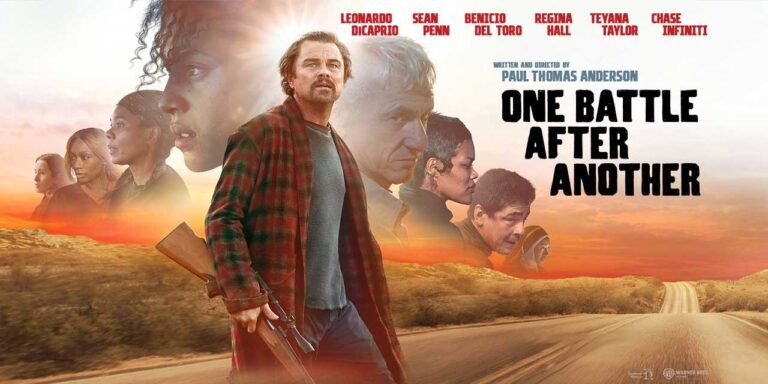
The horror genre has long been a rich tapestry of stories that captivate and terrify audiences in equal measure. Among the most iconic and enduring tales of the macabre is Stephen King’s Pet Sematary, a novel that has left an indelible mark on the literary and cinematic landscape. First published in 1983, the story’s exploration of the consequences of meddling with the natural order of life and death has resonated with readers and viewers for decades.
In 2019, the decision was made to revisit this chilling tale with a new cinematic adaptation, directed by the talented duo of Kevin Kölsch and Dennis Widmyer. As a self-proclaimed fan of the original 1989 film, I was both intrigued and apprehensive about this latest take on the material. Would it capture the essence of the source material, or would it fall victim to the pitfalls that often plague modern remakes? With an open mind and a keen eye, I set out to experience the 2019 version of Pet Sematary and offer my thoughts on this latest exploration of the macabre.
Casting and Characters: Bringing the Tormented Family to Life

One of the key strengths of the 2019 Pet Sematary adaptation lies in its stellar cast. Headlined by the talented Jason Clarke as Dr. Louis Creed, the film boasts a talented ensemble that breathes life into the tormented Creed family. Clarke’s portrayal of the grieving father is both nuanced and compelling, capturing the character’s internal struggle as he grapples with the unthinkable.
Equally impressive is the performance of Amy Seimetz as Rachel Creed, the family’s matriarch. Seimetz’s ability to convey the character’s deep-seated trauma and fear is truly captivating, adding an emotional weight to the film’s more supernatural elements. The young Jeté Laurence also shines as Ellie Creed, the Creed’s precocious and perceptive daughter, whose journey is central to the film’s harrowing narrative.
Rounding out the cast is the legendary John Lithgow as Jud Crandall, the Creed family’s elderly neighbor and guide to the dark secrets of the Pet Sematary. Lithgow’s performance is a masterclass in nuance, as he navigates the character’s dual nature – part benevolent mentor, part harbinger of doom.
Elevating the Elegance: Exploring the Visual Aesthetic
One of the most striking aspects of the 2019 Pet Sematary is its visual elegance, a marked departure from the more overt “trash” aesthetic of the original 1989 film. Directors Kölsch and Widmyer have crafted a visually stunning work, with a keen eye for detail and a masterful use of light and shadow to heighten the film’s sense of unease.
The setting of the Creed family’s new home, nestled in the heart of a mysterious forest, is a character in its own right. The lush, verdant landscape is juxtaposed with the ominous presence of the Pet Sematary itself, a haunting reminder of the dark forces that lurk just beyond the veil of the everyday. The film’s cinematography, with its muted color palette and deliberate framing, creates a sense of foreboding that permeates every frame.
Equally impressive is the film’s attention to production design, with the Creed family’s home and the surrounding town feeling like fully realized, lived-in spaces. The attention to detail, from the weathered textures of the wooden structures to the subtle clutter of everyday life, helps to ground the film’s more fantastical elements and make the horrors that unfold all the more unsettling.
Navigating the Familiar and the New: Balancing Homage and Innovation
As a reimagining of a beloved horror classic, the 2019 Pet Sematary faces the delicate task of honoring the source material while also carving out its own unique identity. In this regard, the film strikes a careful balance, paying homage to the original while also introducing new elements that breathe fresh life into the story.
One of the film’s most successful innovations is its exploration of the Creed family’s backstory, particularly the trauma that haunts Rachel Creed. By delving deeper into the character’s past, the film adds an extra layer of emotional resonance to the proceedings, making the family’s descent into the unknown all the more poignant.
The film’s treatment of the Pet Sematary itself is also a highlight, with the directors opting for a more grounded and unsettling approach to the supernatural elements. Gone are the more overt horror tropes of the original, replaced by a sense of dread and unease that permeates the entire film.
Additionally, the film’s exploration of the town’s history and the mysterious forces that lurk within the forest adds a sense of depth and complexity to the narrative, hinting at a larger, more interconnected mythology that tantalizes the viewer’s imagination.
That said, the film does stumble at times when it comes to directly adapting key moments from the source material. While the directors’ decision to “elevate” the material is admirable, there are instances where the film’s more restrained approach feels at odds with the inherent pulp sensibilities of the original novel and film.
The Enduring Appeal of Pet Sematary: Exploring the Themes and Implications
At the heart of both the original Pet Sematary and its 2019 adaptation lies a profound exploration of the human condition and the consequences of our actions. The central premise – that of a mysterious burial ground that has the power to resurrect the dead – serves as a metaphor for the deep-seated human desire to cheat death and hold onto those we love, no matter the cost.
The Creed family’s journey, as they grapple with the unthinkable loss of a loved one, is a poignant and harrowing exploration of grief, trauma, and the lengths we’ll go to in order to alleviate our pain. The film’s examination of the thin line between love and obsession, and the ways in which our darkest impulses can consume us, is both chilling and thought-provoking.
Moreover, the Pet Sematary mythos taps into a primal fear that resonates with audiences on a universal level – the fear of the unknown, the fear of the supernatural, and the fear of the consequences of our own actions. By delving into these deep-seated anxieties, the film (and the source material) challenges viewers to confront their own mortality and the fragility of the human experience.
Revisiting the Classics: The Enduring Legacy of Pet Sematary
As I reflect on my experience with the 2019 adaptation of Pet Sematary, I can’t help but be struck by the enduring legacy of this horror classic. While the film may not reach the iconic status of the original 1989 adaptation, it nonetheless stands as a worthy and compelling reimagining of a timeless tale.
The film’s ability to balance reverence for the source material with a fresh, innovative approach is a testament to the skill and vision of its directors. By elevating the visual elegance and emotional depth of the story, Kölsch and Widmyer have crafted a Pet Sematary that feels both familiar and entirely new, inviting viewers to engage with the material in a deeper, more contemplative way.
Ultimately, the 2019 Pet Sematary serves as a reminder of the power of storytelling in the horror genre. By delving into the universal themes of grief, mortality, and the consequences of our actions, the film taps into a well of human experience that transcends time and place. It is a testament to the enduring appeal of Stephen King’s original vision, and a testament to the ability of filmmakers to breathe new life into beloved tales of the macabre.



